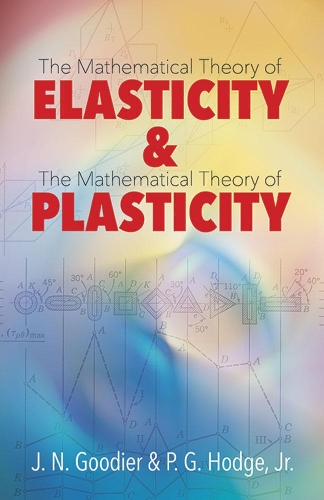
Elasticity and Plasticity: The Mathematical Theory of Elasticity and The Mathematical Theory of Plasticity
(Paperback, First Edition, First ed.)
Publishing Details
Elasticity and Plasticity: The Mathematical Theory of Elasticity and The Mathematical Theory of Plasticity
By (Author) J. N. Goodier
By (author) N.J. Pagano
Dover Publications Inc.
Dover Publications Inc.
24th June 2016
First Edition, First ed.
United States
Classifications
Tertiary Education
Non Fiction
Materials science
531.382
Physical Properties
Paperback
160
Width 140mm, Height 280mm, Spine 10mm
202g
Description
This volume comprises two classic essays on the mathematical theories of elasticity and plasticity by authorities in this area of engineering science. Undergraduate and graduate students in engineering as well as professional engineers will find these works excellent texts and references. The Mathematical Theory of Elasticity covers plane stress and plane strain in the isotropic medium, holes and fillets of assignable shapes, approximate conformal mapping, reinforcement of holes, mixed boundary value problems, the third fundamental problem in two dimensions, eigensolutions for plane and axisymmetric states, anisotropic elasticity, thermal stress, elastic waves induced by thermal shock, three-dimensional contact problems, wave propagation, traveling loads and sources of disturbance, diffraction, and pulse propagation. The Mathematical Theory of Plasticity explores the theory of perfectly plastic solids, the theory of strain-hardening plastic solids, piecewise linear plasticity, minimum principles of plasticity, bending of a circular plate, and other problems.
Author Bio
James Norman Goodier (1905-69) was Professor of Applied Mechanics at Stanford University, working in the fields of elasticity and plastic deformation. His several books on elasticity and related subjects include Theory of Elasticity, third edition, with S. P. Timoshenko. Engineer Philip Gibson Hodge (1920-2014) taught at several universities, including the Illinois Institute of Technology and the University of Minnesota. He wrote many books on plasticity, including Theory of Perfectly Plastic Solids with William Prager.
